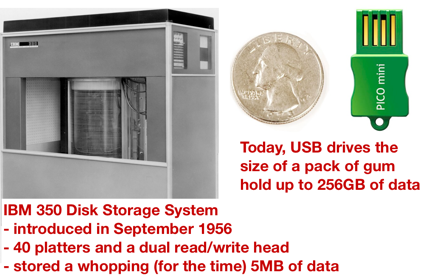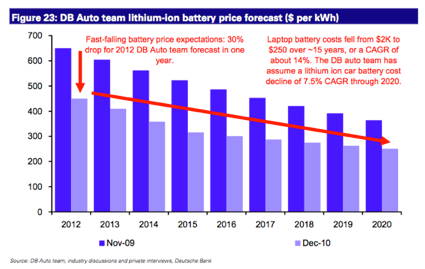In the 1950s, storage hardware was measured in feet -- and in tons. Back then, the era's state-of-the-art computer drive was found in IBM's RAMAC 305; it consisted of two refrigerator-size boxes that weighed about a ton each. One box held 40 24-inch dual-sided magnetic disk platters; a carriage with two recording heads suspended by compressed air moved up and down the stack to access the disks. The other cabinet contained the data processing unit, the magnetic process drum, magnetic core register and electronic logical and arithmetic circuits.
see the entire slideshow here
Today, we have flash drives, microdrives, and onboard solid-state drives that weigh almost nothing, hold gigabytes of data and cost -- compared to the 1950s -- very little. How cheap is storage now? A 1TB hard drive that sells for as little as $60 today would have been worth $1 trillion in the 1950s, when computer storage cost $1 per byte

Lithium-Ion Battery Prices: Moore's Law After All?:
From Paul Sankey's much-cited update report on his "end of the oil age" thesis, the following graph is his take on a speedy decline in lithium-ion battery prices in the coming decade. Sankey argues that this will make all-electric cars are competitive sans subsidy by ... 2020.

No comments:
Post a Comment